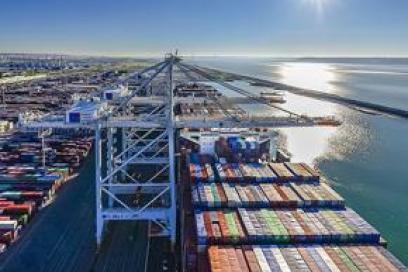- ABOUT US
- GOODS
- A multi-sector focus
- A maritime service offering in the first rank
- An attractive multimodal offering
- An expanded shortsea service offering
- Terminaux portuaires et quais à usage partagé
- High-quality ship services
- Fluid, facilitated goods throughput
- A port that puts its performance figures in the public domain
- PASSENGERS
- MULTIMODALITY
- ECOLOGICAL TRANSITION
- INNOVATION
Improved results in 2022 compared to 2021
Several traffic figures for the first half of 2022 show a clear increase compared to the same period last year. This is particularly the case for :
> maritime : 42.08 Mt of goods (+ 2 Mt) ;
> liquid bulk : + 14.5 % (+ 2.62 Mt) in connection with the restart of the Gonfreville refinery. This involves some variations ;
⇒ crude oil traffic: +65.8 %,
⇒ refined products traffic: -17.1 %,
⇒ chemicals product traffic: +19.9 %,
⇒ gaseous hydrocarbons traffic: -26.6 %.
> containers : stable with 1.485 MEVP (+ 2 % on the inland); market share is slightly up in a context of overall drop in container traffic on the North Range.
> ferry freight vehicles : + 26 % ;
> passengers : + 24 % ;
> dry bulk : - 4.2 %, despite a positive dynamic in the cereals segment (+2%) with a 2022-2023 campaign estimated to be as good as 2021-2022;
> aggregates for the construction market are down : - 22 % or - 260 kt at the end of June, but up (+ 8 %) on average and remain on historical highs driven by the dynamics of work. This downturn is explained by the degraded weather in the first months of the year which had an impact on building sites and the logistical conditions of materials;
> Roro : - 19.4 %, but gained 10 variation points in June.
HAROPA PORT stands up well to national and international crises
The war in Ukraine has had a considerable impact on the trade of agricultural products worldwide. In particular, the export of wheat, corn and oilseeds, which are mainly exported by sea, has been blocked in the Black Sea ports and will also hamper the next harvest.
This situation, however, highlights the essential place that France occupies in the supply of wheat and barley to structurally importing countries and thus opens up new market opportunities.
HAROPA PORT, an attractive logistics and industrial hub
Major investments on the Seine axis are continuing. Thus, the Swiss company TiL, a subsidiary of the shipowner MSC, has undertaken to invest 700 million euros to triple the capacity of the TPO / TNMSC container terminals it operates in the port of Le Havre with the creation of more than 1,000 jobs by 2028.
